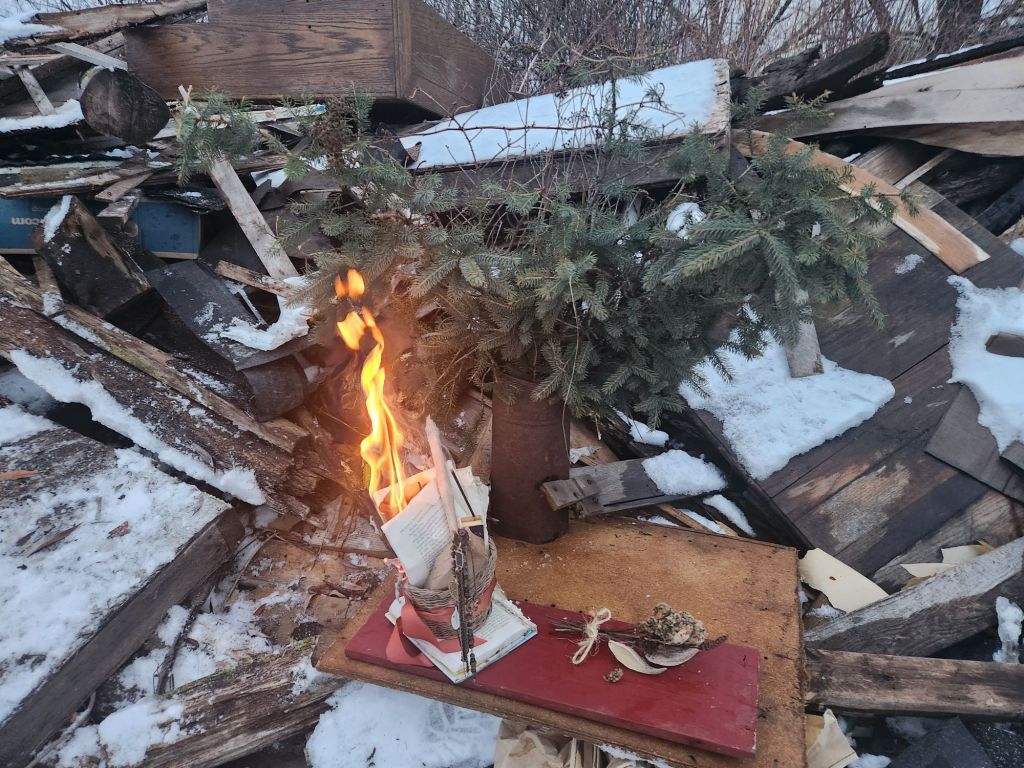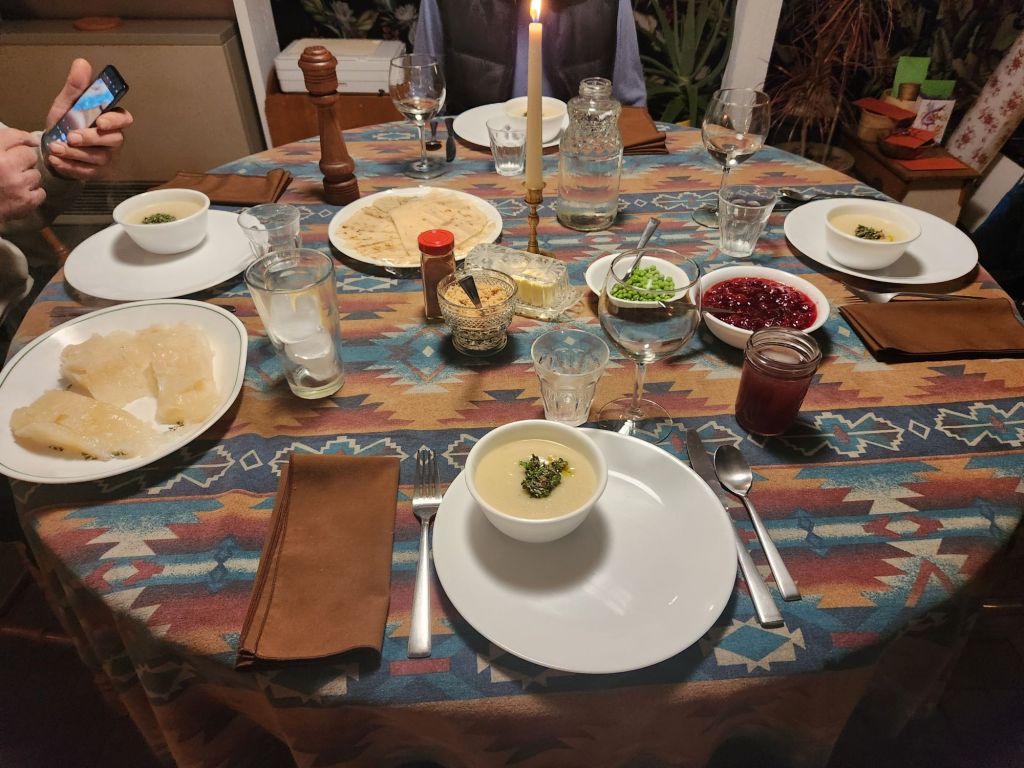After the bizarre ferris wheel ride in the middle of godforsaken nowhere that followed a day of new experiences one after another, I’m exhausted. My roommate is still with her peers at the fair so I have our small room to myself, well almost. The scritch-scratch begins. “Oh no,” I moan as I whip the fuzzy blanket over my head and begin breathing my own fumes. I determine that whatever it is, it WILL NOT touch my skin, not tonight. The noises go on and on and I lay tense and waiting for the inevitable skitter of feet across some body part.
Then the tell-tale rustling stops. “Great,” I groan, “I know you’re just waiting for me to uncover my head and you’ll pounce!” I lay corpse-like, head sweating and hair plastered across my eyes and lips. “Enough already! I’ve had it! I’m done with this game. Go ahead, run over my face, see if I care!” I fling off the offending headcovering and lay listening once again. Still nothing. It takes me about two and a half seconds to fall asleep.
The morning alarm blasts through a dream. I return to my home in Ubud and Pasek greets me full of excitement. The new kitchen has been finished in my absence. He proudly leads me to it. It looks a bit like this, windows crooked, everything cartoonish.
I tell Ketut about the nightmare. “Oh,” says the wise one, “Bad dream mean kitchen good.” He thinks for a minute then adds, “If good dream, then maybe kitchen bad.” Yin yang. Balance. I thank him and suggest that he check on things. He has to go back to Ubud for a few hours today. I’m staying behind to avoid the three hour round trip on the motorbike. He says he will check.
The morning routine is the same as yesterday, but after breakfast, a woman with a box of footed red offering plates wheels in on a motorbike. She’s followed by a virtual army of others, arms full of supplies, long palm fronds, baskets full of flowers, fruits, moss, and a myriad assortment of necessities. Soon they’re thirty strong sitting on the low tables under the blue tarp. Their fingers fly.
In another corner the bloody business of butchering chickens is hidden from view. Unlike a pig slaughter, chickens are silent martyrs and the men are experts. Short work is made of the slim neck. Then the bird is held over a bowl to collect the blood and flung, still fully feathered, into a big, blue bucket. When it’s filled, the bucket moves to the next crew and the bird is neatly denuded. Rows of plucked bodies are strung on long skewers ready for the barbecue pit.
I pick my way through woodchips and bits and discover another enclave of men gathered around chopping blocks. These fellows are cutting up the onions and garlic that I, and hosts of others, spent hours peeling yesterday. But it’s not just garlic, onions, and chilies. There are warty roots, I’m guessing ginger, maybe turmeric, and medicinal looking leaves going into the mix. I smile, shoot a photo, and follow a basin of the chopped mix up the stairs. It’s dumped into a stone bowl and a tall, lean gent commences pulverizing it with a mallet.
The man and woman power represented here to prepare for a child’s birthday party, makes anything a normal family in the States might do look downright skimpy.
In mid-afternoon Ketut returns with a story that my dream was right. The kitchen is completed. “Wait you look-look,” he says with an evil grin. We both know that isn’t possible. I have a good laugh with Ketut at his wry, Balinese humor.
The women are finished. A buffet lunch is spread on outdoor tables. They fill their plates and relax, laughing and joking with each other. When the last bite is consumed, they file out of the compound and head home.

About this time a bucket of fish goes by. They’re dumped out on boards and heads, fins, and tails get the axe. But that’s it. The bones are left in as the body of the fish is chopped into mush by serious looking knives. Minced bones and flesh are now united with the herb and spice mixture and fresh grated coconut to make the spicy satays that I love.
When the last stick of satays is roasted to a turn, the men are fed and they go home.
I’m summoned into the small room that has been decked out for the ceremony. Already a holy man is seated on the platform. Draped fabrics in red, purple and gold create the backdrop for the plates and mounds of offerings that I watched being made just hours ago. This is where I need my sarong but the borrowed one from Komang works fine. One size fits all when it’s just a two meter length of fabric!
The ceremony takes less than an hour. Children come in to stare for a few minutes then leave. Incense fills the room. The holy man rings the bell in a continual clanging and chants prayers as Komang and Ketut perform the rituals they’ve been taught from birth.
I have so many thoughts. First in mind, I’m embarrassed to admit, is the problem of having so much food in one’s bedroom. On the plus side, the critter that visited me the past two nights probably won’t bother when presented with this smorgasbord! But the ants? The sweet kue will attract hoards of them. And what about flies?
I banish those unholy imaginings and soak in the magnitude of the past three days. Ketut appears. “Finished?” I ask. He looks happy.
“Until tomorrow,” he says.
“What happens tomorrow?” Fair question, right?
“Oh, again for my brother, but this time dance.”
“Huh?”
“Ya. Brother’s baby six month ceremony tomorrow but holy man say have dance.”
“Tomorrow?” I repeat, seeing this wilderness vacation stretching on endlessly before me.
“Ya. Gamelan, like before.” As he speaks we walk toward a light and voices. “Can stay?” he asks.
We round a corner and there are Ketut’s brothers and their wives seated under the bare light bulb with a lone bottle of beer in the center of their small circle. They’re woodcarvers and though they’ve worked constantly all day long preparing for the ceremony, the job that makes money is carving.
I happen to know that neither Ketut nor his brothers drink alcohol. It’s expensive, and as Ketut tells me, “Too strong.” But a guest brought several bottles to the gathering today and the carvers are sharing one.
We leave the jovial group and I tell Ketut that of course I want to stay for his brother’s ceremony and the dance. What a privilege, what an honor, what an exquisite glimpse into a time and place that most Western eyes have never seen.
My roommate appears and we enter our little house together. She drops to the floor, rolls in her blanket, and is asleep. I turn off the light, grope for my sleepwear with one ear tuned for the scratch-scratch, and slide into bed. As I suspected, the ferreting varmint has better pickings elsewhere and I’m left in peace. Sleep descends.

































































Comments